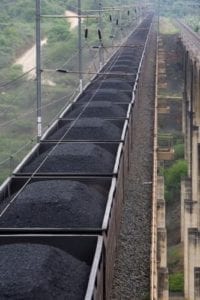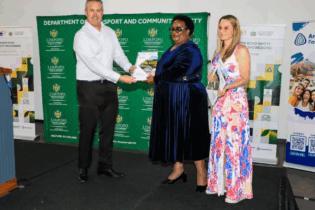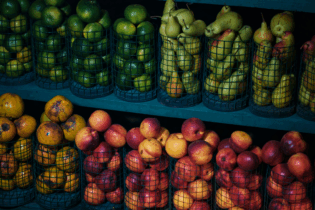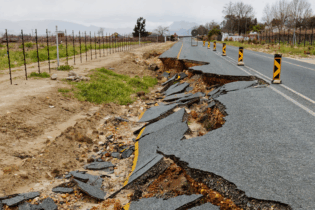Having spent a day at the two-day Coal Transportation Africa Summit, Tristan Wiggill asked Transnet’s Divyesh Kalan (DK) and transport economist Andrew Marsay (AM), about the measures currently underway to boost South Africa’s coal exports by rail.
A central theme on the day was the need for industry-wide collaboration, a topic Kalan was happy to elaborate on. His presentation was titled: “Next Steps in Creating Export Capacity.” DK: “We [Transnet] try to collaborate with junior miners and the majors. We’ve successfully done that in the manganese and iron ore sectors. We understand that we can’t demand that every junior miner invest in capital. Investment is a function of economics, life of mine, and the annualised throughput you get on rail and port capacity. We try to encourage collaborative processes between the junior and major miners so they can share the loading facilities on commercial terms. We also created the coal industry forum. I think we’ve been a lot more participative than in the past. There’s a lot of engagement.” Realism Marsay was encouraged by the wisdom that Transnet has recently demonstrated, in terms of the transportation requests it receives from miners. AM: “What’s really good to see is the emergence of commercial realism. Requests to transport coal are being investigated and audited by Transnet. Consider that you might investigate the ramp up of what may be a legitimate mining right, with the potential for four million tonnes, only to realise its 100 000 tonnes in year three, 500 000 tonnes in year four’, and 2 000 000 tonnes in year five. Suddenly, you’re left with a very, very different scenario to what you thought you had. You thought you needed to create a railway, for example, in the Waterberg, with twenty or thirty million tonnes in five years’ time. “We are seeing much greater honesty in the relationship between the mines and Transnet. I think that’s very much to be welcomed. Hopefully, there’s also a growing realism on the side of the industry. Transnet cannot do everything for everybody all the time. There’s a very good mutual recognition process happening. The industry needs to recognise that Transnet is committed, long-term, to providing a predictable framework of capacity, but that it cannot do everything. “There is a tendency within the industry to look at the Richard’s Bay coal line, which will give some people a tariff of $15 (two-and-a-half US cents per tonne, per kilometre), for example, from Ermelo to Richard’s Bay, and say: Why can’t I have that on the Maputo line? Why can’t I have that out of Waterberg? – forgetting that the low tariff means a high-volume, long-period commitment to long distance. That low tariff cannot always be replicated and so an organisation like Transnet faces the quandary: How does it recover its costs without charging a tariff that nobody can afford? And how can it commit to long-term infrastructure?” Party hard While there is talk of a fairly ambitious expansion programme for the Waterberg, success is very much perceived to be dependent on miners coming to the party. DK: “We’ve already started the first phase to unlock 6.3 million tonnes, but what we find is that the miners we’ve been working with run for a while, and then come to a standstill. We are showing goodwill and commitment to this [RichCor 81 Mtpa] project but, likewise, miners have got to show a similar commitment. “Every time we have a meeting with the miners, the project is another year older. So what we are saying is: If you have projects in the Waterberg, let’s be more transparent. If you are dependent on an Eskom supply, don’t just say you’ve got an Eskom agreement. In fact, I propose that Eskom, Transnet, and the company sit around one table together, because we can’t speak in different rooms. Something is going to break. “We are committed to run ahead, but it’s a function of where the industry is. We need to underpin these investments through long-term contracts. You don’t want a take-or-pay contract that’s a noose around your neck and an impediment to your business. We haven’t done a full validation on the Waterberg assets yet, so we’ll be doing that soon. We will be informed by the infrastructure investments made by the mines in the region. There’s no point in having investments and stranded capacity.” Benefits Someone in the audience asks how increases in the export capacity of coal will assist local beneficiation. DN: “Most beneficiation will be seen in coal washing. Greater levels of beneficiation will occur in the iron ore and manganese sectors. “The big challenge we have with coal, in this country, is to make sure we don’t evacuate coal and leave Eskom high and dry. We did a valuation of the coal resources, some years ago, when looking into the RichCor 81Mtpa expansion drive and we were quite comfortable that there was sufficient export capacity and Eskom supply.“Those dynamics can change, depending on Eskom’s requirements. We will seek guidance from the Departments of Public Enterprises, Energy, and Minerals on how they will take the issue of limiting exports forward.
“Right now, there hasn’t been a clear path and we don’t see a need for any changes. There was talk of increasing exports to 120 Mtpa. I think when we play above 81 Mtpa there may be some risk. There is always room for a smaller port operator, for what I would call the deep grades. There are certain markets which you could send smaller ships to. You could send certain types of anthracite, perhaps. We don’t see the Richard’s Bay Coal Terminal as a competitor to any of the ports. But, I think the ports should be more collaborative and complementary. “We are expanding the scalable manganese line to 16 Mtpa and are looking at validation for iron ore and manganese expansion. We are a lot more bullish about the long term, but we find that the mines are taking shortened decisions on where they are. A few months ago, the mines wanted maybe six million tonnes, today they are saying they are not expanding because of market forces. So, we are not sure if we’re going to get caught in a super cycle, whenever it returns.” AM: “The more you beneficiate, the lower the volume of product you’re going to move, so, the less viable it becomes to put it on rail. A trade-off has to be sought in beneficiation policy and it’s going to affect the manganese industry significantly. “Hopefully, you get to more economic added value through the beneficiation. Zambia, for example, is now exporting pure copper plates. You’ll see convoys of trucks coming all the way down from the copper belt to Durban, six trucks in a row, which appear half-empty, but it’s because they’ve got flat plates of copper. It’s very high value, and not economical to put on rail. So, the total potential export volume out of the copper belt on the North-South Corridor will decline in proportion to the amount of beneficiation that takes place. In terms of economic policy-making, one has to balance these things. “What is clear is that Transnet is having to become a lot more commercial in its thinking. It cannot invest without realisation of the real commercial underpinnings of the demand.” Cooling off There is a view that rail projects around the world are put on ice because the coal price has to reach a certain level before it becomes financially viable. DK: “The kind of studies we’ve done are to clearly understand the mines, in terms of the cost curve. We try and understand the ability versus the affordability. It’s not just the coal price; it’s where we’re sitting on the cost curve. A lot of the mines that we have in this country, in iron ore for example, are sitting on the correct (left) side of the curve, so we can still take a bit of margin at the current ore price. “When we do our formation of iron aluminide FeAL studies, we’ve got to have an informed tariff. It’s a difficult thing, because it’s a long-term project. Companies are saying they’ll sign a take-or-pay contract, depending on the commerciality and market conditions at that point in time. “Building an expansion line will probably take longer than setting up a mine. So, how do you marry these two things together? I imagine the mines would be in the best position to know. We will not expand if we don’t have the underpinning of the commercial arrangement. The mines themselves know what the markets and costs are going to look like at an informed tariff. Rail and ports are sizeable components of commodity prices today. “We’re trying to foster collaboration in the industry. When companies are running well and making money, everybody’s quite parochial. If you take junior miners in Mpumalanga or the Northern Cape, you’ll find they are hiring yellow equipment, but if you look at the utilisation of that equipment, it’s actually fairly low. We need to encourage collaboration, in terms of getting a mining contract to work across two or three neighbouring mines, to optimise costs. As Transnet, we have a shareholding and we’ve got to earn a certain return on our assets.” AM: “The question is: How will we align the interests of miners and railways if the miners have no commercial share in the railway and the transport company has no commercial share in the mines? “We’re hearing this coming up as we learn how to understand each other more and where we’re each coming from. But, really, there can be no viable sustainable way forward unless we get to a point where transport and mining are in the same business commercially. How to do this I don’t know. Each country has its own model, but countries which will not face up to the necessity of institutional, as well as technological, change will lose out. “The Department of Transport has been grappling with a new rail policy for quite a few years and they’re scared to come to the party and say: In the area of bulk rail systems, we need to do something like this. Mining risk and transport risk have to be aligned, otherwise both could go down.” Transnet is currently involved in seven major coal transport initiatives:- RichCor 81Mtpa: This project is designed to ramp up and sustain tonnage capacity of 81Mtpa. The yards at Blackhill, Saaiwater, and Vryheid will be upgraded and new substations (five on the DC section and two on the AC section) will be built. New electrical (OHTE) feeder wire projects covering 99 km, a locomotive workshop in Ogies, and a locomotive turntable in Richards Bay are to be developed. The packaging of infra and rolling stock condition assessment systems, two Eskom projects to strengthen the transmission line backbones and development of Transnet traction power systems, will provide power connections to the new substations.
- The Waterberg Project: This involves upgrading the existing rail infrastructure to accommodate, initially, an additional two one-hundred-wagon trains and, eventually, six two-hundred-wagon trains traversing from Lephalale to Ermelo. These will connect to the coal line going to Richard’s Bay. Forty percent of South Africa’s remaining coal reserves are said to be in the Waterberg.
- Project Shongololo. This will optimise operational efficiencies on the coal line and reduce operational costs.
- Excavation of the second Overvaal tunnel: Done to remove bottlenecks along the coal line and improve turnaround times.
- Swaziland Rail Link: Finalisation of an alternative route to assist and relieve pressure on the Transnet Coal Line to Richard’s Bay, freeing capacity for heavy haul bulk coal traffic.
- Navitrade RBTG: Upgrading of the Bhizolo yard in Richard’s bay to increase capacity to the RBTG Navitrade Terminal to 6 Mtpa.
- The Maputo/Limpopo coal and magnetite project. This is an efficiency improvement initiative to reduce train operation activities in the yard.








